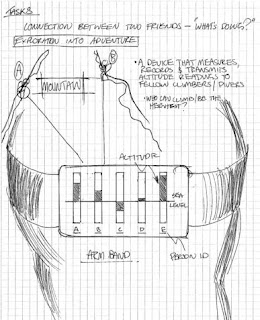Is it just me, or do
industrial designers love to pull apart old crap,
recycle working components and use them to create ludacris, Frankenstein-like devices?
Today we had the opportunity to go into the workshop and do just this. A small group of use each had different products from clippers to
RC boats, cars and helicopters to electric tooth picks to pedometers. The idea was to pull these products apart and see how they worked, what controlled them, what kind of user input was required to create an output. We would first have an estimate of possible ways certain
outputs could be achieved, which were then either confirmed or questioned once the product was in pieces.
The task however didn't stop at learning about
how these products worked. It was the brought upon us that some of the components in these old products were still functioning quite well. "Why not "fix" a few of these products?" Through the exercise of replacing motors with bigger ones, retrofitting wheels and magnets, the aim led to trying to create and propeller powered boat on wheels.
First however, we needed to pull apart a particular object -
 |
| Pull apart the removable parts of the Object without breaking it. |
 |
| Find some tools! The beauty about these mass produced products is there standardization within the manufacturing process - basically every screw that holds it together is the same. |
 |
| Taking apart the main body of the object can reveal a lot in terms of the simple mechanisms of how it works - in this case using polystyrene foam to add buoyancy to the object as well as water protection??? |
 |
| How is the mechanical "DRIVE" components held in place? In this case more standardized screws that keep the RC boat together! |
 |
| It is reletively simple to see how the electronic circuit board can control and route the radio frequency input into mechanical outputs |
 |
| Find the mechanical output components and figure out how they work together to create the effect of - in this case - moving a boat across the water. |
 |
| What are the brains behind this movement (excluding the user)? The circuit board acts as a router path for the electronic currents to follow and find it's final destination at the mechanical operators. |
 |
| Finally the boat is pulled apart to its barest form (or that that is possible from a screwdriver). We can see how all the mechanical components are linked together to receive the desired output from the controller. |
 |
| We find the problem with the broken boat and come up with a simple solution. Some kind of universal joint was missing from connection between the electric motor and the drive shaft. A simple replacement was fabricated out of balsa wood which served as a viable means of bringing the boat back to mechanical working form. |
 |
| At first look this particular mechanism wasn't understood. However after further taking it appart.... |
 |
| A simple electromagnet contrained on a swivel point is enough to give the boat a full movement using a rudder system, not unlike those found in real boats. |
 |
| An exploded view of the mechanism can be seen to show how the rudder system of the boat works. |
Creating this pointless product actually gave us the insight needed to explore interaction design further. We can continue to ask questions such as.. "What do I want my products output to be?" "How can I achieve the output?" "What sort of input will it need?" "What kind of user interaction does this create?" These are the things we need to be thinking about when developing a interactive product.















